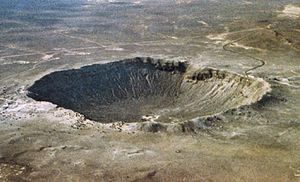
19.3.1 Convective Mantle and Radioactivity
In 1892, Thomson, Lord Kelvin, calculated the age of Earth by using thermal gradients, and arrived at an estimate of 100 million years old. He did not realize that Earth has a highly viscous fluid mantle, and this ruined his calculation.
In 1895, John Perry produced an age of Earth estimate of 2 to 3 billions years old using a model of a convective mantle and thin crust. Kelvin stuck by his estimate of 100 million years, and later reduced the estimate to about 20 million years.
Radioactivity would introduce another factor in the calculation. In 1896, the French chemist A. Henri Becquerel discovered radioactivity. In 1898, two other French researchers, Marie and Pierre Curie, discovered the radioactive elements polonium and radium. Geologists quickly realized that the discovery of radioactivity upset the assumptions on which most calculations of the age of Earth were based. These calculations assumed that Earth and Sun had been created at some time in the past and had been steadily cooling since that time. Radioactivity provided a process that generated heat. George Darwin and Joly were the first to point this out, also in 1903.
19.3.2 Why Meteorites Were Used
Today’s accepted age of Earth of 4.55 billion years was determined by C.C. Patterson using uranium-lead isotope dating (specifically lead-lead dating) on several meteorites including the Canyon Diablo meteorite and published in 1956.
Most geological samples from Earth are unable to give a direct date of the formation of Earth from the solar nebula because Earth has undergone differentiation into the core, mantle, and crust, and this has then undergone a long history of mixing and unmixing of these sample reservoirs by plate tectonics, weathering and hydrothermal circulation.
All of these processes may adversely affect isotopic dating mechanisms because the sample cannot always be assumed to have remained as a closed system. To mitigate this effect it is usual to date several minerals in the same sample, to provide an isochron. Alternately, more than one dating system may be used on a sample to check the date.
Some meteorites are furthermore considered to represent the primitive material from which the accreting solar disk was formed. Some have behaved as closed systems (for some isotopic systems) soon after the solar disk and the planets formed. To date, these assumptions are supported by much scientific observation and repeated isotopic dates.
Nevertheless, ancient Archaean lead ores of galena have been used to date the formation of Earth as these represent the earliest formed lead-only minerals on the planet and record the earliest homogeneous lead-lead isotope systems on the planet. These have returned age dates of 4.54 billion years with a precision of as little as 1% margin for error.
19.3.3 Why the Canyon Diablo Meteorite Was Used
The Canyon Diablo meteorite was used because it is a very large representative of a particularly rare type of meteorite which contains sulfide minerals, metallic nickel-iron alloys, plus silicate minerals.
Barringer Crater, Arizona where the Canyon Diablo meteorite was found.
The Canyon Diablo date has been backed up by hundreds of other dates, from both terrestrial samples and other meteorites. The meteorite samples, however, show a spread from 4.53 to 4.58 billion years ago. This is interpreted as the duration of formation of the solar nebula and its collapse into the solar disk to form the Sun and the planets. This 50 million year time span allows for accretion of the planets from the original solar dust and meteorites.
The moon, as another extraterrestrial body which has not undergone plate tectonics and which has no atmosphere, provides quite precise age dates from the samples returned from the Apollo missions. Rocks returned from the moon have been dated at a maximum of around 4.4 and 4.5 billion years old. Martian meteorites which have landed upon Earth have also been dated to around 4.5 billion years old by lead-lead dating.
Altogether, the concordance of age dates of both the earliest terrestrial lead reservoirs and all other reservoirs within the solar system found to date are used to support the hypothesis that Earth and the rest of the solar system formed at around 4.53 to 4.58 billion years ago.
19.3.4 Helioseismic Verification
The radiometric date of meteorites can be verified with studies of the Sun. The Sun can be dated using “helioseismic” methods which strongly agree with the radiometric dates found for the oldest meteorites.

